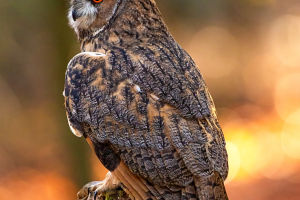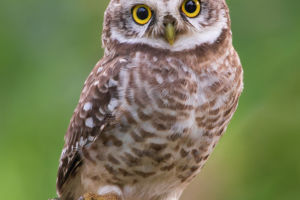In the intricate tapestry of nature's ecosystem, woodpeckers are remarkable avian creatures, their rhythmic pecking on tree trunks a spectacle of nature.
While many may attribute this behaviour to a quest for sustenance, the reality is far richer and more nuanced.
Beyond mere foraging, woodpeckers' relentless tree-pecking serves multifaceted purposes deeply rooted in their ecological roles. In this exploration, we delve into the intricate reasons why woodpeckers persistently peck at trees.
Firstly, it's essential to comprehend woodpeckers' lifestyle and ecological niche. These birds, characterized by their insectivorous diet, possess beaks uniquely evolved into formidable tools for tree pecking.
With precision, they scour tree trunks for sustenance, targeting creatures like woodlice and borers. Their sharp beaks deftly peel bark, unveiling hidden insect delicacies, which they capture with their long, adhesive tongues.
While this behaviour is often perceived solely driven by hunger, its significance extends beyond mere nourishment.
Woodpeckers' tree-pecking behaviour is intricately intertwined with territory establishment and defence, courtship rituals, and reproductive strategies.
Primarily, woodpeckers stake territorial claims through their pecking endeavours. During the breeding season, male woodpeckers meticulously select and assert ownership over territories by incessantly pecking at trees.
This ritualistic display serves dual purposes: attracting potential mates and warding off rival males. The reverberating echoes of their pecks resonate through the forest, signalling to competitors that the territory is fiercely guarded while simultaneously alluring females with promises of protection and ample resources.
Moreover, the rhythmic drumming of woodpeckers against trees is an elaborate courtship display. Male woodpeckers utilize this percussive performance to showcase their vigour, vitality, and reproductive fitness to prospective mates.
Each resonating beat communicates essential information about the suitor's genetic quality and ability to provide for offspring. In response, females evaluate these displays, seeking partners with the highest potential for healthy offspring and successful reproduction.
Furthermore, woodpeckers' pecking behaviour extends to the realm of reproductive preparation. Many species of woodpeckers rely on tree cavities for nesting sites, necessitating meticulous exploration of potential nesting locations.
Through their adept pecking, woodpeckers probe tree trunks, seeking suitable hollows or insect-riddled areas conducive to nesting.
This preparatory phase is crucial for ensuring the survival and well-being of their offspring, as the chosen nesting site must offer protection from predators and environmental hazards.
In essence, the incessant pecking of woodpeckers transcends mere sustenance, embodying a complex tapestry of ecological significance. Beyond satiating hunger, their rhythmic drumming serves as a declaration of ownership, a symphony of courtship, and a precursor to the miracle of new life.
As stewards of the natural world, we mustn't overlook the profound intricacies of woodpeckers' behaviour but instead embrace the opportunity to unravel the mysteries of their role in the intricate web of life.


